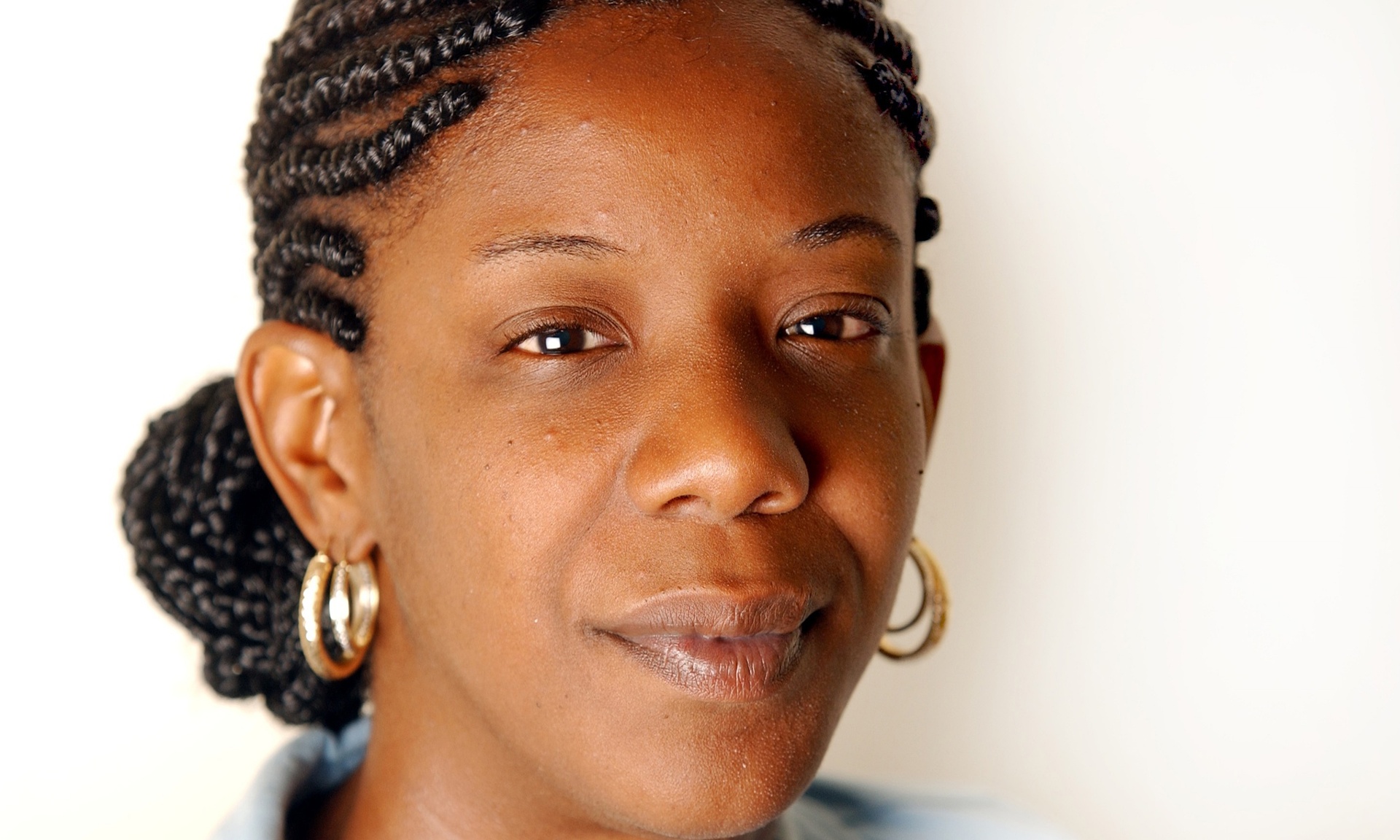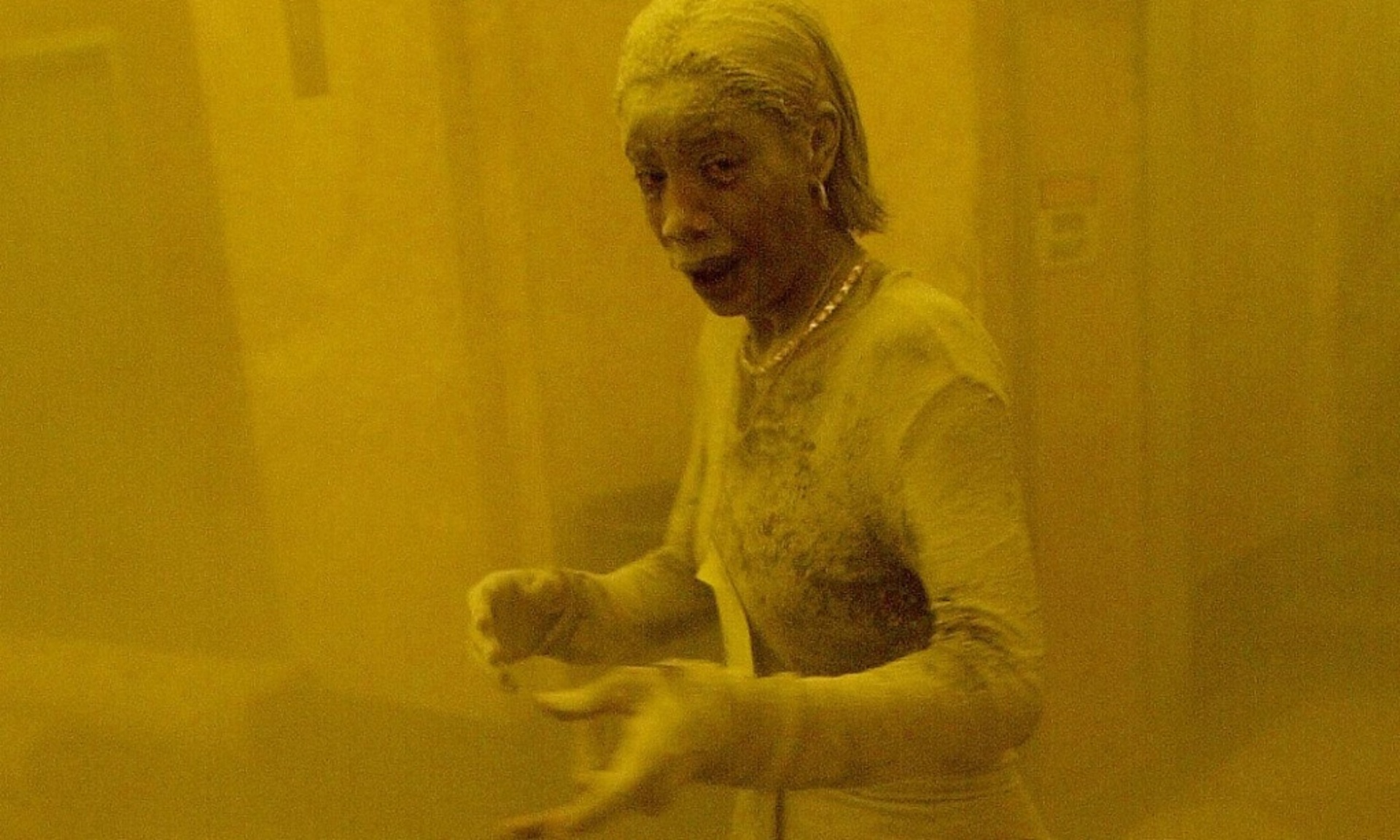It was one of the most haunting images that emerged after 9/11: a woman covered in ash and powdered concrete fleeing the World Trade Center after the first plane struck the tower and brought horror to the heart of New York.
Marcy Borders was a 28-year-old Bank of America worker when the photograph of her staring into the lens with her eyes asquint and her mouth agape was taken. Borders, who came to be known around the world as “dust lady”, died on Monday at the age of 42 after a year-long battle with stomach cancer that she blamed on dust inhaled during the attack.
“I can’t believe my sister is gone,” Michael Borders wrote of his sibling on Facebook. Borders’ cousin John Borde added that she was a “hero” and she “unfortunately succumbed to the diseases that have ridden her body since 9/11”.
“In addition to losing so many friends, coworkers, and colleagues on and after that tragic day … the pain from yesteryear has found a way to resurface,” he said.
Borders had no idea she had been photographed until her mother called to say she had seen the picture. The image remained an emblem of the problems that continued to trouble her after the attacks.
She told the Jersey Journal before her death: “I’m saying to myself ‘Did this thing ignite cancer cells in me?’ I definitely believe it because I haven’t had any illnesses. I don’t have high blood pressure … high cholesterol, diabetes.
“How do you go from being healthy to waking up the next day with cancer?”
Borders, of Bayonne, New Jersey, was just a month into her new job on the 81st floor of the north tower when American Airlines Flight 11 slammed into the building. Instead of remaining at her desk, as her supervisor had ordered, she ran from the building and into the chaotic street, which was heaving with enormous clouds of dust and the hordes of walking wounded.
It was when a stranger pulled her into the lobby of another building just as the north tower came crashing down that a photographer captured her face.
“I was picking the junk off the desk, getting ready to start my day,” Borders said in an interview in 2011. “That was then the plane hit. That’s when the building started quaking and swaying. I lost all control, and I went into a frenzy. I fought my way out of that place.
“Hundreds of people were trying to get out. My stairwell was badly damaged and we had to move stairwells, I was convinced we were going to die. I’m so glad I had the strength to get to the bottom. There were wounded and the injured, it was too much for one to witness.
“I saw people with things sticking out of them, covered head to toe in blood. I couldn’t understand it. What I saw was carnage, and I thought, ‘God, I’m going to die anyway’.”

Borders’ life spiralled downward after that fateful moment in 2001. She battled severe depression and became addicted to crack cocaine. “I didn’t do a day’s work in nearly 10 years, and by 2011 I was a complete mess,” she said. “I was convinced Osama bin Laden was planning more attacks. Every time I saw an aircraft, I panicked. If I saw a man on a building, I was convinced he was going to shoot me.”
After losing custody of her two children, Borders checked into rehab in April 2011 and remained sober. She announced that she’d been diagnosed with stomach cancer and had undergone chemotherapy last summer. She was scheduled to undergo further surgery, radiation and chemotherapy in December.
Her daughter, Noelle, told the New York Post her mother “fought an amazing battle”.
“Not only is she the ‘Dust Lady’ but she is my hero and she will forever live through me.”
Thousands of people who were at Ground Zero on and after 9/11 – including emergency service workers, survivors and local residents – have since been diagnosed with cancer. In 2011, the September 11th Victim Compensation Fund was re-opened to compensate first responders for health problems related to the attacks.
Multiple studies conducted in the 14 years since 9/11 show that first responders and people working and living downtown at the time of the attacks have since experienced new or exacerbated respiratory ailments. And Mount Sinai Selikoff Centers for Occupational Health said last year that there were at least 1,646 certified cancer cases found in 9/11 first responders and rescuers.
Yet, no study has conclusively proved a connection between 9/11 and cancer in people who were at Ground Zero during and immediately following the attacks. Researchers have called for continued monitoring of survivors and long-term analysis of medical conditions experienced by people who were at Ground Zero – in part because cancer can take much longer to develop than respiratory illness.
The air at Ground Zero contained pulverized concrete, shards of glass and carcinogens, according to a 2011 Centers for Disease Control and Prevention report.
Under the Zadroga Act, which provides money for treatment of 9/11-related illness, the World Trade Center health program must conduct a regular review of ground zero-related health conditions. The program initially excluded cancer, but was amended in 2012 after a push by politicians who said there was sufficient evidence to prove a connection between the attack and cancer.







